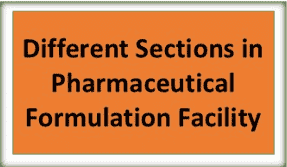GMP vs. cGMP: What Sets Them Apart?
This article contains the Differentiation between Good manufacturing practices (GMP) and Current Good manufacturing Practices (cGMP).
Differentiation of GMP Vs cGMP
Introduction :

GMP and cGMP are crucial regulations in the pharmaceutical industry to ensure the quality of drugs and medical devices. These regulations provide a framework for manufacturers to produce safe, Qualitative and effective products, which are compliant with regulatory requirements.
GMP regulations vary depending on the region, country, or regulatory body. In the United States, the Food and Drug Administration (FDA) enforces GMP regulations for Drugs, medical devices. The regulations are found in Title 21 of the Code of Federal Regulations (CFR) and specify the minimum requirements for manufacturing and quality control. In European countries The European Medicines Agency (EMA) enforces GMP regulations for Drugs, medical devices . In India Central Drugs Standard Control Organization (CDSCO) enforces GMP regulations for Drugs, Medical devices.
Compliance with these regulations is necessary for regulatory approval and enhances a company’s reputation and credibility.
Good Manufacturing Practices or GMP is also referred as “cGMP” The “c” stands for “current,”
What is mean by GMP/cGMP and What is the Difference among them ?
Good Manufacturing Practices or GMP is a system that consists of processes, procedures and documentation that ensures manufacturing products, such as pharmaceutical products, are consistently produced and controlled according to set quality standards.
In short, cGMP means Technologies and systems which are up-to-date in order to comply with the current regulation.
Good Manufacturing Practices or GMP is also referred as “cGMP” The “c” stands for “current,”
Implementing GMP can help cut down on losses and waste and provide the good quality products.
It also helps to guard against any risk that can be catastrophic for products, such as cross-contamination, adulteration, and mislabeling.
Benefits of GMP/cGMP
The benefits of GMP and cGMP include improved product quality, increased patient safety, and reduced risk of product recalls.
Challenges faced for implementing GMP/cGMP
Implementing GMP /cGMP can be challenging for pharmaceutical manufacturers due to the complexity of the regulations and the need for continuous compliance. The cost of implementing GMP and cGMP can also be high, as it requires investments in facilities, equipment, and personnel training. Manufacturers may also face challenges in keeping up with changing regulatory requirements and incorporating new technology into their manufacturing processes.
Examples of Basic Good Manufacturing practices which need to follow in pharmaceutical industry :
- Personnel: GMP requires all personnel involved in manufacturing and quality control have necessary education, training, and experience to perform their work effectively.
- Documentation: GMP requires all manufacturing, testing and quality control activities are documented in detail, including standard operating procedures (SOPs), batch records, and test results.
- Facilities : Pharmaceutical facilities are designed, constructed, and maintained in a way that prevents contamination and cross contaminations and allows for effective cleaning and maintenance.
- Equipment: GMP requires all equipment used in the manufacture and testing of pharmaceutical products is maintained and calibrated to ensure accuracy and reliability.
- Materials: GMP requires all materials used in the manufacture of pharmaceutical products are of the appropriate quality, tested and stored and handled in a way that prevents contamination.
- Validation: All manufacturing and testing processes are validated to ensure that they consistently produce products of the required quality.
- Training: All involved employees in the manufacture, testing, and distribution of pharmaceutical products receive ongoing training and education to ensure that they are aware of the latest GMP regulations and best practices.
- Cleaning: GMP requires that all equipment and manufacturing areas are cleaned and sanitized before and after use to prevent contamination and cross-contamination between products.
- Quality Management System (QMS) : Any changes/Deviations/incidents to the manufacturing process, equipment, or materials used in the production of pharmaceutical products are carefully evaluated, documented, and validated to ensure that they do not affect the quality or safety of the product.
- Batch Release: Each batch of a pharmaceutical product is thoroughly tested and evaluated before it is released for sale. The testing includes a review of batch records, analytical testing, and stability testing to ensure the product is stable over its shelf-life.


